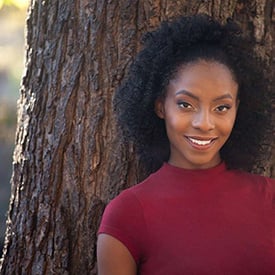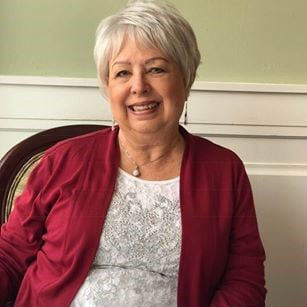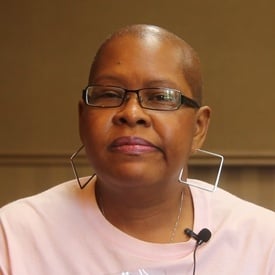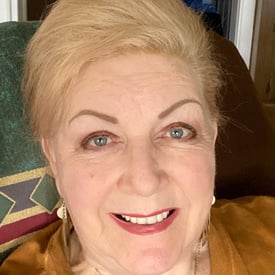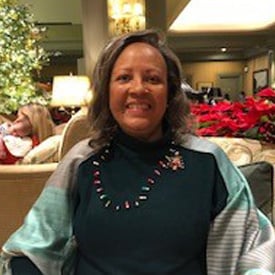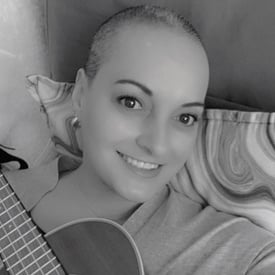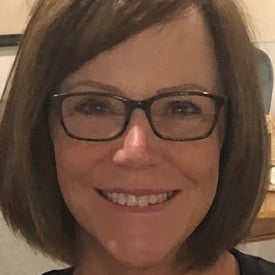Sista D-FFA/LPP
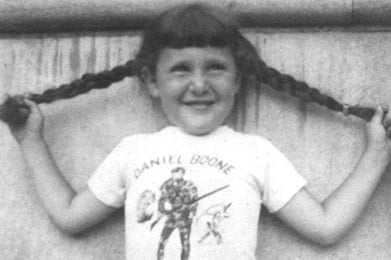
Little did I know that I would someday look like my grandmother…and then some.
“Little did I know that I would someday look like my grandmother…and then some.”
There’s an old photo of my father and his mother that stands out in my mind. My grandmother was younger than I am now, balding with very fine frizzy hair. My father was 28 years old and almost completely bald. As many girls growing up in the 50’s, I took pride in my long pigtails. Little did I know that I would someday look like my grandmother…and then some.
In my 20’s and 30’s, I can’t say anything was remarkable about my hair except dealing with common frizz. By my late 40’s it began to get a little thin in the front and by my mid 50’s, I was getting thinner on top as well. Oddly enough, four years ago, at 58 years old, I noticed the hair on my temples and sideburns beginning to thin. Women and men my age and even older seemed to have more hair than me and I started to get self-conscious. I assumed it was just my androgenic alopecia fate from my father’s side of the family, but since my hair loss pattern was quite unusual, I finally went to a dermatologist in the winter of 2014. The doctor noted inflammation around my hair follicles and opted for a biopsy. The diagnosis was unsurprisingly androgenic alopecia but alas coupled with scarring alopecia (LPP and FFA). I was told my condition was rare, difficult to treat, and an incurable condition that would need medical support for many years. Dazed and devastated by this outcome, the reality seemed unreal.
I began to do endless research to better understand my condition and take charge of my health. Serendipitously, I came across the SAF website in time to attend a support group that met every 3 months and was able to attend a SAF Patient Conference, where the speakers answered many of my questions about the disease. As a new patient, it served as a quick start for my personal CICAL journey. Equally invaluable was being able to connect with other patients at the conference. Having a rare condition can be very lonely and only other patients can truly appreciate the nuances of living with scarring alopecia and its emotional and physical impact.
After the conference, I was in a state of shock. By associating with others like myself for the first time, I was no longer able to be in denial about this new diagnosis that was challenging my sense of well-being. I “toughed it out” for a few days but finally allowed myself to cry my heart out, which lasted for three full days. No words can describe my feelings other than total loss blended with complete compassion for self. Letting down my guard and embracing those raw emotions gave me the strength I needed to begin to nurture myself and move forward with my life.
My dermatologist once said, “The hardest thing about this disease is the “not knowing,” like how much hair we will lose, if a treatment will work, and for how long, etc. She wasn’t kidding –it’s like being on a roller coaster! I take an arsenal of Tier 1 treatments. Sometimes I feel symptom-free and overjoyed and thinking I’m on the mend but the very next day I get a painful flare up and fear the worst extreme outcome possible. Most likely it’s something in-between that I will learn to live with and accept while I take the best care of my health as able.
In my opinion, baldness is one of woman’s greatest primal fears. After I have a heavier than normal hair shed, I find myself imagining the loss will be endless and often begin to panic. I then look in the mirror at the new unfamiliar me and have a talk with her. It is still me and I will love and be proud of her no matter what. I think of what brings real meaning to my life: my family, friends, the health, the beauty I still have and the joy of being alive in the moment including enjoying the hair I still do have while I have it.
The first time I wore a headband I felt I could relax wind or shine. They’re now my failure proof public disguise. I’m excited I’m getting a lovely hair piece soon, so I’ll be less obsessed with the progression of losing hair and have something in my hair future to look forward to.
Over the past eight months, I’ve reached a level of comfort with my disease that I couldn’t imagine was possible. No longer mortified, I’ve shared my condition with several friends who are nothing but supportive. I opt for a lifestyle that includes more sleep, less stress, exercise and balanced nutrition. I’m excited to say the time-consuming arsenal of meds and topicals I am taking seem to be slowing down the disease and helping with inflammation. I’ve had some regrowth in non-scarred areas but am preparing myself to live a happy hairless life regardless. I’m intent on enjoying the moment, the life and hair I have now.
Probably what has given me the most courage of all are the other patients I’ve met through SAF. Some have been on the CICAL journey a long time and others are just beginning. We share our experiences, resources and tips. We allow each other to whine and most of all, we laugh together.

